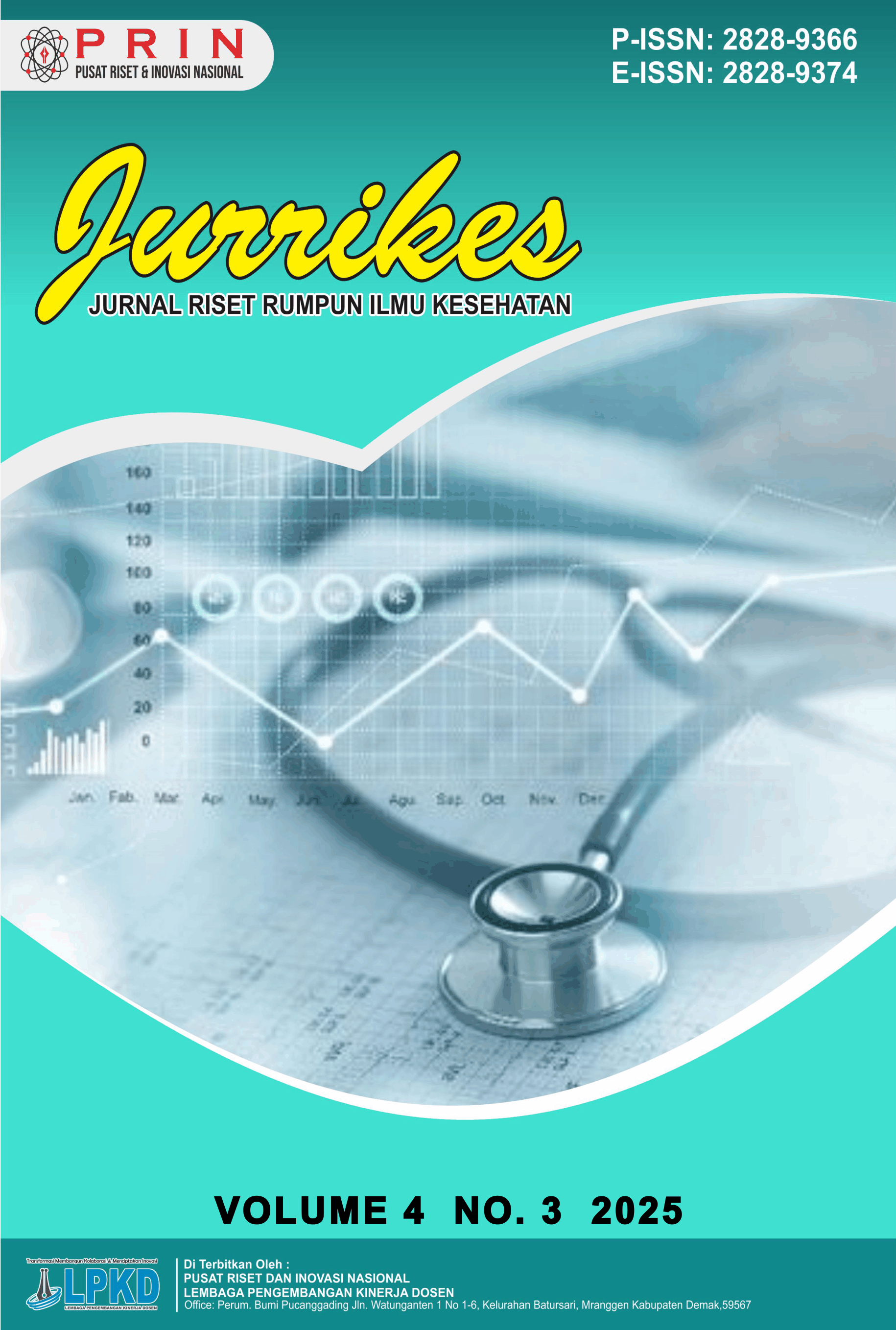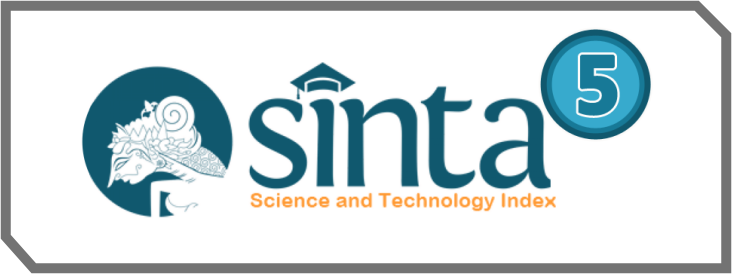Sistem Diagnostik Mata Digital berbasis Optoscope untuk Deteksi Dini Gangguan Penglihatan secara Akurat dan Efisien
DOI:
https://doi.org/10.55606/jurrikes.v4i3.6586Keywords:
Astigmatism, Digital Optoscope, Health App, Self-Screening, Visual Acuity TestAbstract
The development of digital technology has had a significant impact on the health sector, including eye examination services. This study discusses the development and implementation of a Digital Optoscope-based Eye Diagnostic application designed using a web platform (HTML). This application provides two main features: visual acuity testing and astigmatism testing, which can be accessed independently by users through digital devices such as laptops, tablets, or mobile phones. Users only need to follow the visual instructions presented interactively on the screen, then perform the test according to the procedure. The testing method is carried out by displaying font size settings according to the Snellen chart standard and radial astigmatism patterns. The results of each test session are automatically recorded and can be saved for further analysis. In addition, users can perform repeated tests to improve the accuracy of self-diagnosis, and the system will provide lens type recommendations based on the measurement results obtained. The trial results show that this application is able to provide convenience, efficiency, and initial accuracy in the process of examining vision disorders. This is very useful, especially for people in remote areas or with limited access to professional eye health services. Thus, the Digital Optoscope-based Eye Diagnostic application has the potential to be an innovative solution for the early digital detection of vision disorders. This study recommends further development, particularly in clinical validation, testing on a wider sample size, and integration with electronic medical record systems to enhance its benefits in comprehensive public health services. Furthermore, collaboration with medical professionals is crucial to ensure diagnostic accuracy. With this approach, the app is expected to become a reliable tool for continuous eye health monitoring.
Downloads
References
Adler-Milstein, J., & Jha, A. K. (2017). Electronic health records: The promise and the pitfalls. Health Affairs, 36(1), 7–15. https://doi.org/10.1377/hlthaff.2016.0972
Amiri, M., et al. (2018). Medical software development: A systematic review of waterfall and agile methodology. Journal of Medical Systems, 42(6), 102. https://doi.org/10.1007/s10916-018-0963-x
Bastawrous, A., & Armstrong, M. J. (2013). Mobile health use in low- and high-income countries. BMJ, 346, f1035. https://doi.org/10.1136/bmj.f1035
Bastawrous, A., & Rono, H. K. (2019). Digital innovations for eye health: Opportunities for improving access and quality. Community Eye Health Journal, 32(107), 64–65.
Bates, D. W., et al. (2018). Big data in health care: Using analytics to identify and manage high-risk patients. Health Affairs, 33(7), 1123–1131. https://doi.org/10.1377/hlthaff.2014.0041
Black, J. M., et al. (2019). Validation of a digital visual acuity assessment tool for clinical and remote settings. JAMA Ophthalmology, 137(9), 1015–1021. https://doi.org/10.1001/jamaophthalmol.2019.2335
Bland, J. M., & Altman, D. G. (2020). Statistical methods for assessing agreement. BMJ, 327(7413), 1154–1156. https://doi.org/10.1136/bmj.327.7413.1154
Ehrlich, J. R., et al. (2019). Mobile app testing for visual acuity assessment. JAMA Ophthalmology, 137(4), 389–390. https://doi.org/10.1001/jamaophthalmol.2018.6733
Fatehi, F., et al. (2022). Telemedicine for chronic disease management. Journal of Telemedicine and Telecare, 28(1), 3–11. https://doi.org/10.1177/1357633X211006092
Graber, M. L., et al. (2019). Reducing diagnostic errors through effective electronic health record use. BMJ Quality & Safety, 28(9), 795–798. https://doi.org/10.1136/bmjqs-2018-008623
Häyrinen, K., Saranto, K., & Nykänen, P. (2018). Definition, structure, content, use and impacts of electronic health records: A review of the research literature. International Journal of Medical Informatics, 77(5), 291–304. https://doi.org/10.1016/j.ijmedinf.2007.09.001
International Council of Ophthalmology (ICO). (2020). Guidelines for refractive error assessment. https://www.icoph.org
International Electrotechnical Commission. (2006). IEC 62304:2006 Medical device software – Software life cycle processes.
Kaur, M., et al. (2022). Digital screening for astigmatism: Current evidence and future directions. Indian Journal of Ophthalmology, 70(1), 21–27. https://doi.org/10.4103/ijo.IJO_1187_21
Kementerian Kesehatan Republik Indonesia. (2022). Situasi gangguan penglihatan dan kebutaan di Indonesia. Pusat Data dan Informasi Kemenkes RI.
Khan, M., et al. (2021). The impact of COVID-19 pandemic on eye care: A review. Annals of Medicine and Surgery, 69, 102733. https://doi.org/10.1016/j.amsu.2021.102733
Kruse, C. S., et al. (2018). Barriers to electronic health record adoption: A systematic literature review. Journal of Medical Systems, 42, 122. https://doi.org/10.1007/s10916-018-1070-9
Labrique, A. B., et al. (2018). Digital health in low-resource settings. Global Health: Science and Practice, 6(1), 1–6. https://doi.org/10.9745/GHSP-D-17-00330
Li, J. O., et al. (2021). AI in ophthalmology. Nature Digital Medicine, 4, 102. https://doi.org/10.1038/s41746-021-00456-8
Lingham, G., et al. (2020). Accuracy and reliability of digital applications for visual acuity assessment: A systematic review. Ophthalmic and Physiological Optics, 40(2), 183–194. https://doi.org/10.1111/opo.12675
Price, W. N., & Cohen, I. G. (2019). Privacy in the age of medical big data. Nature Medicine, 25(1), 37–43. https://doi.org/10.1038/s41591-018-0272-7
Royce, W. W. (1970). Managing the development of large software systems. In Proceedings of IEEE WESCON (Vol. 26, pp. 1–9).
Wolffsohn, J. S., et al. (2017). TFOS DEWS II diagnostic methodology report. The Ocular Surface, 15(3), 539–574. https://doi.org/10.1016/j.jtos.2017.05.001
World Health Organization. (2019). World report on vision. World Health Organization.
Downloads
Published
How to Cite
Issue
Section
License
Copyright (c) 2025 JURNAL RISET RUMPUN ILMU KESEHATAN

This work is licensed under a Creative Commons Attribution-ShareAlike 4.0 International License.







